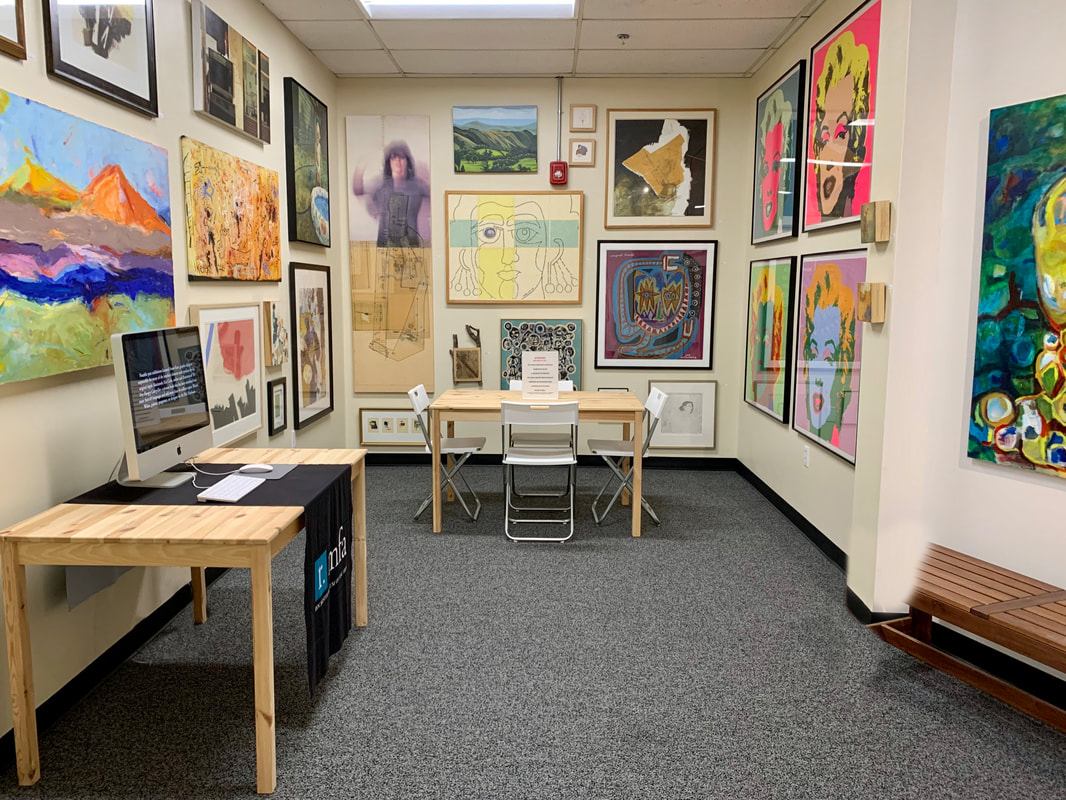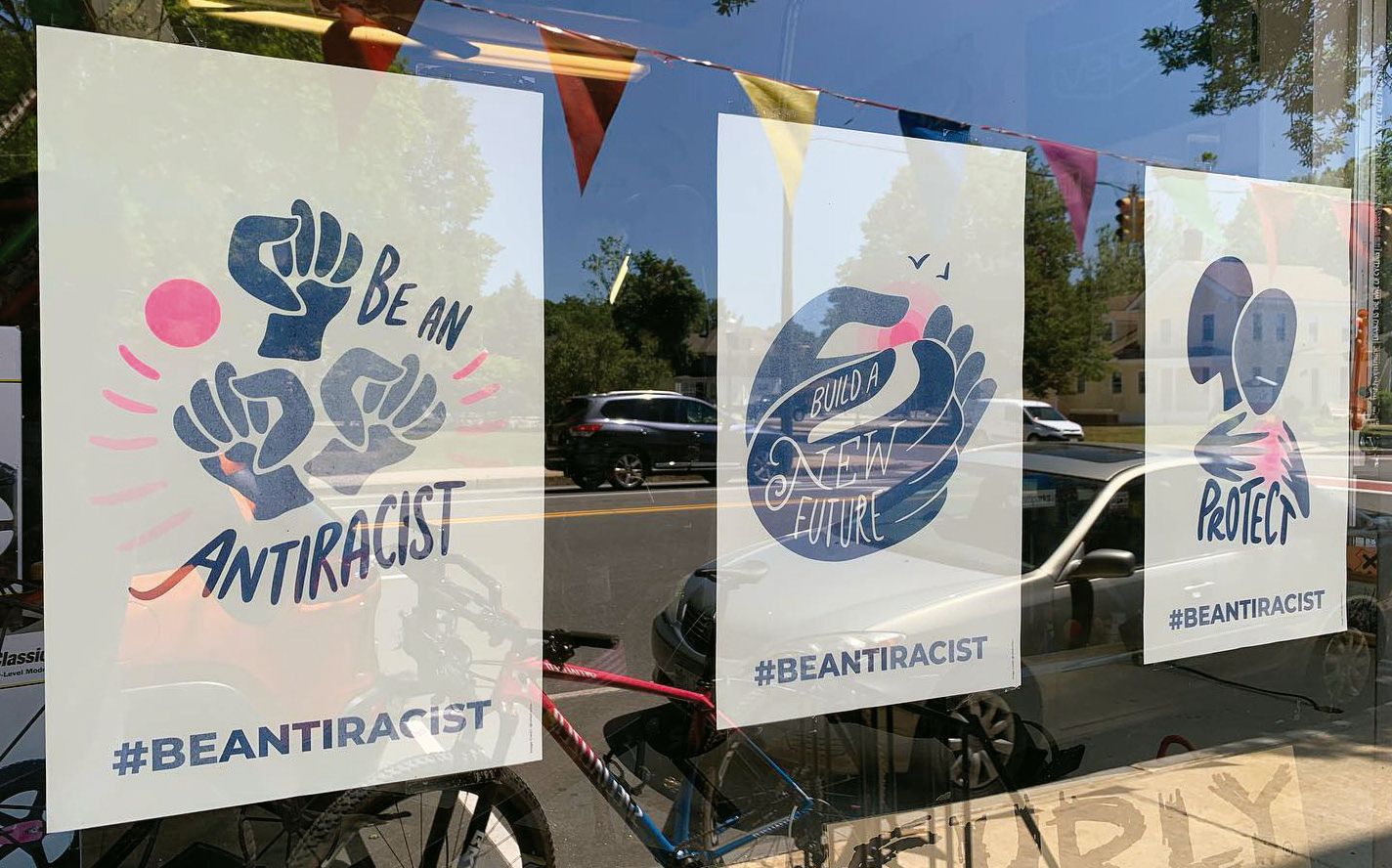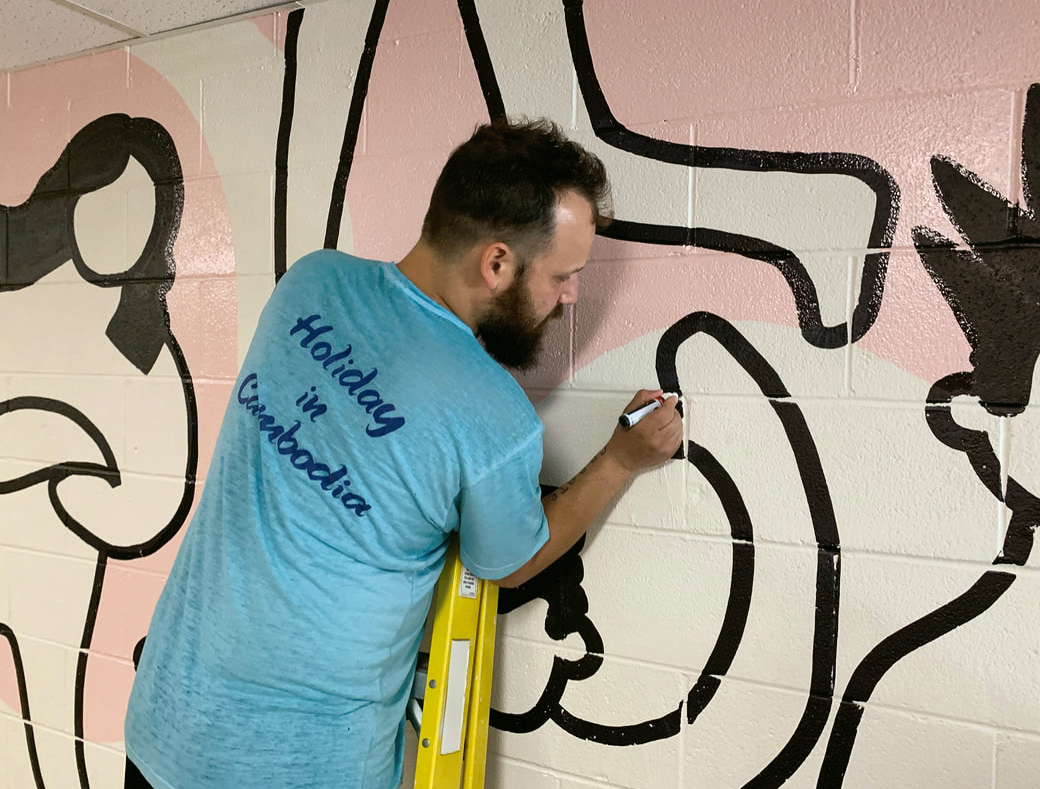

Rochester may not be the first place that comes to mind when thinking about the arts in New Hampshire, but it is well on its way to being better recognized for the way that the arts are helping to revitalize its downtown.
While there is a trend in many towns and cities to embrace the value of the arts to create vibrant communities, artist Matt Wyatt began working with the city many years ago to place artwork in unexpected places like empty storefront windows to attract people to the downtown.
Wyatt and Amy Regan co-founded the Rochester Museum of Fine Arts 10 years ago this month. It is not your typical museum or art gallery, which can be somewhat intimidating to people who ordinarily would not visit an art establishment. The RMFA, as it’s called, is housed in the James W. Foley Memorial Community Center, whose walls provide the perfect blank canvas and a budgetneutral location for the pair to share their passion for art with people of all ages and from all walks of life.
Wyatt says it’s important that “there is no cost to viewing any of our art collection or gallery. We present exceptional examples of art, making it accessible to everyone.” Artwork includes objects from their permanent collection, and gallery exhibitions rotate monthly.
When visitors go to the building to register their car, check out the community clothing store, go to the food pantry or take their kids to karate class, they encounter original art as they make their way to their destinations.
Wyatt says, “We are overwhelmed by how positive the response has been. It’s humbling, when people come up to us, especially when we’re working in the building, to thank us for what we are doing.” He shared a story of a young boy stopping in front of a painting with his dad who explained that they were looking at abstract art. Knowing that the two were compelled to take a closer look at the art and talk about what they were seeing was satisfying, he says.
A financial model
The RMFA is a volunteer organization with a limited budget, but Wyatt and Regan’s commitment to making fine art accessible overrides any frustration they might otherwise feel were it a for-profit endeavor.
Many commercial art galleries around New Hampshire have closed in recent years. “There are a lot of great galleries that have come and gone over the years that we’ve looked up to.” The RMFA also serves as a sales platform for artists at every stage of their career. They maintain relationships with artists throughout the country, consistently displaying about 200 works in the community center.
Exhibition openings in the Mayor Harvey E. Bernier Room take place from 6 to 8 p.m. the first Thursday of every month. The openings allow artists to tell the story behind their art and give the public a good chance to ask questions of the artists.
“We think about accessibility from a lot of different points of view, for residents and people around the region, but also for artists to get their work out there,” says Wyatt, adding that the RMFA does not have to sell artwork to run the organization, which allows them to focus their energy on putting together interesting shows and helping to market artists’ work.
“We’re really proud that we are just in the halls. We have a model that works financially,” he says.
Among those who appreciate the RMFA’s operational approach and contributions to the community is Rochester’s director of economic development, Mike Scala.
He’s witnessed the way that the arts interest those who shop, dine and conduct business in the area. He wants to see more of that kind of interaction and excitement.
Scala says that he knows firsthand from living in other New Hampshire communities that the arts are fundamental to change.
“(Reinventing) your downtown requires a couple of things. Most notable is density, which we’ve been working on, getting people downtown,” he says. “The arts are part of that — they draw people downtown.”
Scala gives credit to Wyatt, because he sees him as not only a talented artist with deep roots in the arts community but also a good businessperson.
“I don’t think he realizes what a good businessman he is. The way he is able to stretch a dollar amazes me,” says Scala. These two factors may be why Scala has a $10,000 discretionary fund designated specifically to help support the RMFA and bring public art around the city.
‘An artistic presence’
Partnerships between the arts and local municipalities can transform places. The empty retail spaces where Wyatt once exhibited artwork are now filled with thriving businesses. The nonprofit organization Rochester Main Street serves as the fiscal sponsor of the RMFA, making it possible for Wyatt and Regan to raise money to pay for the museum’s art projects. Other critical support comes from businesses in town, including Bernier Insurance and Waterstone Properties Group. Their investment helps the RMFA put its mission into action. Wyatt thinks of the entire city serving as the museum and says that the RMFA’s relationships with Rochester Main Street and the city’s Arts and Culture Commission encourages public support for murals and art installations.
Scala points to connecting the public and private sectors as the key to building a better downtown. He emphasizes that having an arts scene in a community serves as a conduit for transformation.
“It is very important that we have an artistic presence so that we can differentiate ourselves,” he says. He also says he wants people to have positive encounters with art so they have a visceral response and say, “‘Wow, I really like that!’ and they don’t even know why they like it, but they like it. You want them to get in their car and say, ‘Yeah, I’ll come back.’” In addition to all the visual arts, Scala says there are a number of unusual shops and bars in town that also draw people from around the region, including one of the premier comic stores in the state, a 6,000-square-foot record shop (owned by a former punk rock musician), as well as the Rochester Opera House and the Rochester Performance & Arts Center. The mix of funky stores, cool bars and the arts plays a big part in Rochester’s economic development plan.

‘You do not have to go to Boston or New York in order to see great art,’ artist Matt Wyatt says. ‘Artists and art lovers are everywhere, so art should be presented everywhere.’ (Courtesy photos)
Having a seat at the table with local government will allow Wyatt to continue to demonstrate how the arts build community and that they are an economic force in the redevelopment of downtowns.
In fact, Wyatt and Regan welcome other communities to look to the RMFA as a model for making art more accessible and creating opportunities for artists to exhibit. You do not have to go to Boston or New York in order to see great art, Wyatt says. “Artists are everywhere, art lovers are everywhere — not just in big cities — so art should be presented everywhere.”
The RMFA displays are located in Suite 135 and the hallways of the James W. Foley Memorial Community Center, 150 Wakefield St., Rochester. There is a virtual public art map on the museum’s website, rochestermfa.org, for self-guided tours.